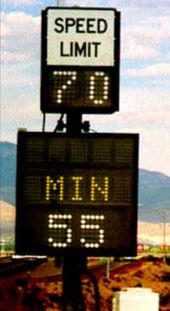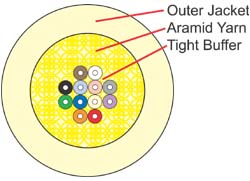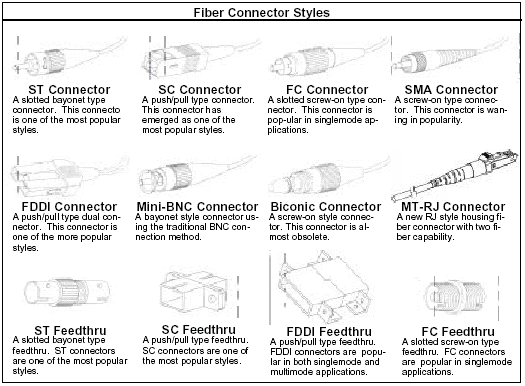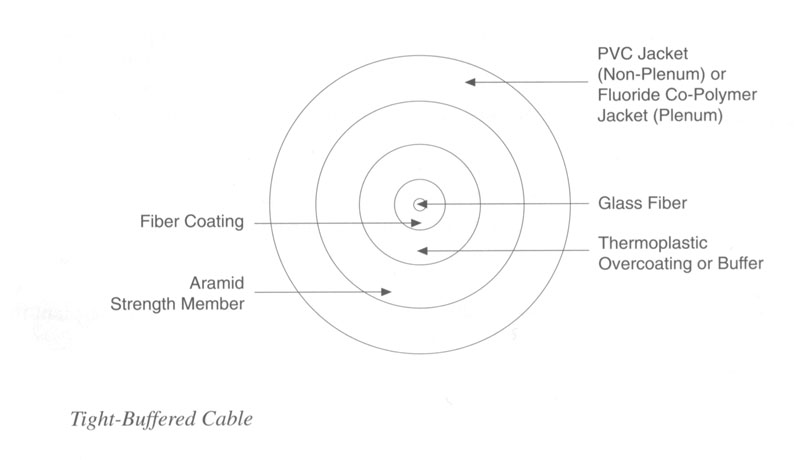Intelligent
Transport Systems (ITS) are advanced applications which without
embodying intelligence as such aim to provide innovative services
relating to different modes of transport and traffic management and
enable various users to be better informed and make safer, more
coordinated and ‘smarter’ use of transport networks.
Although ITS may refer to all modes of transport, EU Directive
2010/40/EU of 7 July 2010 on the framework for the deployment of
Intelligent Transport Systems in the field of road transport and for
interfaces with other modes of transport defines ITS as systems in which
information and communication technologies are applied in the field of
road transport, including infrastructure, vehicles and users, and in
traffic management and mobility management, as well as for interfaces
with other modes of transport.
Background
The United States, for example, saw large increases in both
motorization and urbanization starting in the 1920s that led to
migration of the population from the sparsely populated
rural areas and the densely packed
urban areas into
suburbs. The
industrial economy replaced the
agricultural economy,
leading the population to move from rural locations into urban centers.
At the same time, motorization was causing cities to expand because
motorized transportation could not support the
population density that the existing
mass transit
systems could. Suburbs provided a reasonable compromise between
population density and access to a wide variety of employment, goods,
and services that were available in the more densely populated urban
centers. Further, suburban infrastructure could be built quickly,
supporting a rapid transition from a rural/agricultural economy to an
industrial/urban economy.
[citation needed]
Recent governmental activity in the area of ITS – specifically in the
United States – is further motivated by an increasing focus on
homeland security. Many of the proposed ITS systems also involve surveillance of the roadways, which is a priority of homeland security.
Funding of many systems comes either directly through homeland security
organizations or with their approval. Further, ITS can play a role in
the rapid
mass evacuation
of people in urban centers after large casualty events such as a result
of a natural disaster or threat. Much of the infrastructure and
planning involved with ITS parallels the need for homeland security
systems.
In the
developing world,
the migration of people from rural to urbanized habitats has progressed
differently. Many areas of the developing world have urbanized without
significant motorization and the formation of suburbs. In areas like
Santiago, Chile, a high population density is supported by a
multimodal system of walking,
bicycle transportation,
motorcycles,
buses, and
trains. A small portion of the population can afford
automobiles,
but the automobiles greatly increase the congestion in these multimodal
transportation systems. They also produce a considerable amount of air
pollution, pose a significant safety risk, and exacerbate feelings of
inequities in the society.
Other parts of the developing world, such as
China,
remain largely rural but are rapidly urbanizing and industrializing. In
these areas a motorized infrastructure is being developed alongside
motorization of the population. Great disparity of wealth means that
only a fraction of the population can motorize, and therefore the highly
dense multimodal
transportation system
for the poor is cross-cut by the highly motorized transportation system
for the rich. The urban infrastructure is being rapidly developed,
providing an opportunity to build new systems that incorporate ITS at
early stages.
Intelligent transport technologies
Intelligent transport systems vary in technologies applied, from basic management systems such as
car navigation;
traffic signal control systems; container management systems; variable message signs;
automatic number plate recognition or
speed cameras to monitor applications, such as security
CCTV systems; and to more advanced applications that integrate live data and feedback from a number of other sources, such as
parking guidance and information systems; weather information; bridge
deicing
systems; and the like. Additionally, predictive techniques are being
developed to allow advanced modeling and comparison with historical
baseline data. Some of these technologies are described in the following
sections.
Wireless communications
Various forms of wireless communications technologies have been proposed for intelligent transportation systems.
Radio modem communication on
UHF and
VHF frequencies are widely used for short and long range communication within ITS.
Longer range communications have been proposed using infrastructure networks such as
WiMAX (
IEEE 802.16),
Global System for Mobile Communications (GSM), or
3G.
Long-range communications using these methods are well established,
but, unlike the short-range protocols, these methods require extensive
and very expensive infrastructure deployment. There is lack of consensus
as to what business model should support this infrastructure.
Computational technologies
Floating car data/floating cellular data
"Floating car" or "probe" data collection is a set of relatively
low-cost methods for obtaining travel time and speed data for vehicles
traveling along streets, highways, freeways, and other transportation
routes. Broadly speaking, three methods have been used to obtain the raw
data:
- Triangulation Method. In developed countries a high proportion of cars contain one or more mobile phones.
The phones periodically transmit their presence information to the
mobile phone network, even when no voice connection is established. In
the mid 2000s, attempts were made to use mobile phones as anonymous
traffic probes. As a car moves, so does the signal of any mobile phones
that are inside the vehicle. By measuring and analyzing network data
using triangulation,
pattern matching or cell-sector statistics (in an anonymous format),
the data was converted into traffic flow information. With more
congestion, there are more cars, more phones, and thus, more probes. In
metropolitan areas, the distance between antennas is shorter and in
theory accuracy increases. An advantage of this method is that no
infrastructure needs to be built along the road; only the mobile phone
network is leveraged. But in practice the triangulation method can be
complicated, especially in areas where the same mobile phone towers
serve two or more parallel routes (such as a freeway with a frontage
road, a freeway and a commuter rail line, two or more parallel streets,
or a street that is also a bus line). By the early 2010s, the popularity
of the triangulation method was declining.
- Vehicle Re-Identification. Vehicle re-identification methods
require sets of detectors mounted along the road. In this technique, a
unique serial number for a device in the vehicle is detected at one
location and then detected again (re-identified) further down the road.
Travel times and speed are calculated by comparing the time at which a
specific device is detected by pairs of sensors. This can be done using
the MAC (Machine Access Control) addresses from Bluetooth devices, or using the RFID serial numbers from Electronic Toll Collection (ETC) transponders (also called "toll tags").
- GPS Based Methods. An increasing number of vehicles are
equipped with in-vehicle GPS (satellite navigation) systems that have
two-way communication with a traffic data provider. Position readings
from these vehicles are used to compute vehicle speeds.
Floating car data technology provides advantages over other methods of traffic measurement:
- Less expensive than sensors or cameras
- More coverage (potentially including all locations and streets)
- Faster to set up and less maintenance
- Works in all weather conditions, including heavy rain
Sensing technologies
Technological advances in telecommunications and information technology, coupled with state-of-the-art microchip,
RFID (Radio Frequency Identification), and
inexpensive intelligent
beacon
sensing technologies, have enhanced the technical capabilities that
will facilitate motorist safety benefits for intelligent transportation
systems
globally. Sensing systems for ITS are vehicle- and infrastructure-based networked systems, i.e.,
Intelligent vehicle technologies.
Infrastructure sensors are indestructible (such as in-road reflectors)
devices that are installed or embedded in the road or surrounding the
road (e.g., on buildings, posts, and signs), as required, and may be
manually disseminated during preventive
road construction
maintenance or by sensor injection machinery for rapid deployment.
Vehicle-sensing systems include deployment of infrastructure-to-vehicle
and vehicle-to-infrastructure electronic beacons for identification
communications and may also employ video
automatic number plate recognition
or vehicle magnetic signature detection technologies at desired
intervals to increase sustained monitoring of vehicles operating in
critical zones.
Inductive loop detection
Inductive loops
can be placed in a roadbed to detect vehicles as they pass through the
loop's magnetic field. The simplest detectors simply count the number of
vehicles during a unit of time (typically 60 seconds in the
United States)
that pass over the loop, while more sophisticated sensors estimate the
speed, length, and weight of vehicles and the distance between them.
Loops can be placed in a single lane or across multiple lanes, and they
work with very slow or stopped vehicles as well as vehicles moving at
high-speed.
Video vehicle detection
Traffic flow measurement and automatic incident detection using video
cameras is another form of vehicle detection. Since video detection systems such as those used in
automatic number plate recognition
do not involve installing any components directly into the road surface
or roadbed, this type of system is known as a "non-intrusive" method of
traffic detection. Video from black-and-white or color cameras is fed
into
processors that analyze the changing characteristics of the video image as vehicles pass. The cameras are typically mounted on
poles
or structures above or adjacent to the roadway. Most video detection
systems require some initial configuration to "teach" the processor the
baseline background image. This usually involves inputting known
measurements such as the distance between
lane
lines or the height of the camera above the roadway. A single video
detection processor can detect traffic simultaneously from one to eight
cameras, depending on the brand and model. The typical output from a
video detection system is lane-by-lane vehicle speeds, counts, and lane
occupancy readings. Some systems provide additional outputs including
gap, headway, stopped-vehicle detection, and wrong-way vehicle alarms.
Intelligent transport applications
Emergency vehicle notification systems
The in-vehicle
eCall
is an emergency call generated either manually by the vehicle occupants
or automatically via activation of in-vehicle sensors after an
accident. When activated, the in-vehicle eCall device will establish an
emergency call carrying both voice and data directly to the nearest
emergency point (normally the nearest E
1-1-2 Public-safety answering point,
PSAP). The voice call enables the vehicle occupant to communicate with
the trained eCall operator. At the same time, a minimum set of data will
be sent to the eCall operator receiving the voice call.

The minimum set of data contains information about the incident,
including time, precise location, the direction the vehicle was
traveling, and vehicle identification. The pan-European eCall aims to be
operative for all new type-approved vehicles as a standard option.
Depending on the manufacturer of the eCall system, it could be mobile
phone based (Bluetooth connection to an in-vehicle interface), an
integrated eCall device, or a functionality of a broader system like
navigation, Telematics device, or tolling device. eCall is expected to
be offered, at earliest, by the end of 2010, pending standardization by
the
European Telecommunications Standards Institute and commitment from large EU member states such as France and the United Kingdom.
The EC funded project SafeTRIP
is developing an open ITS system that will improve road safety and
provide a resilient communication through the use of S-band satellite
communication. Such platform will allow for greater coverage of the
Emergency Call Service within the EU.
Automatic road enforcement
A traffic enforcement camera system, consisting of a
camera and a
vehicle-monitoring device, is used to detect and identify vehicles disobeying a
speed limit
or some other road legal requirement and automatically ticket offenders
based on the license plate number. Traffic tickets are sent by mail.
Applications include:
- Speed cameras that identify vehicles traveling over the legal speed limit. Many such devices use radar to detect a vehicle's speed or electromagnetic loops buried in each lane of the road.
- Red light cameras that detect vehicles that cross a stop line or designated stopping place while a red traffic light is showing.
- Bus lane cameras that identify vehicles traveling in lanes reserved for buses. In some jurisdictions, bus lanes can also be used by taxis or vehicles engaged in car pooling.
- Level crossing cameras that identify vehicles crossing railways at grade illegally.
- Double white line cameras that identify vehicles crossing these lines.
- High-occupancy vehicle lane cameras for that identify vehicles violating HOV requirements.
- Turn cameras at intersections where specific turns are prohibited on
red. This type of camera is mostly used in cities or heavy populated
areas.
Variable speed limits

Example variable speed limit sign in the United States.
Recently some jurisdictions have begun experimenting with variable
speed limits that change with road congestion and other factors.
Typically such speed limits only change to decline during poor
conditions, rather than being improved in good ones. One example is on
Britain's
M25 motorway,
which circumnavigates London. On the most heavily traveled 14-mile
(23 km) section (junction 10 to 16) of the M25 variable speed limits
combined with automated enforcement have been in force since 1995.
Initial results indicated savings in journey times, smoother-flowing
traffic, and a fall in the number of accidents, so the implementation
was made permanent in 1997. Further trials on the M25 have been thus far
proved inconclusive.
Collision avoidance systems
Japan has installed sensors on its highways to notify motorists that a car is stalled ahead.
Dynamic Traffic Light Sequence
Intelligent
RFID traffic control has been developed for dynamic
traffic light
sequence. It circumvents or avoids problems that usually arise with
systems that use image processing and beam interruption techniques.
RFID technology with appropriate
algorithm
and database were applied to a multi vehicle, multi lane and multi road
junction area to provide an efficient time management scheme. A dynamic
time schedule was worked out for the passage of each column. The
simulation has shown that, the dynamic sequence
algorithm
has the ability to intelligently adjust itself even with the presence
of some extreme cases. The real time operation of the system able to
emulate the judgment of a traffic police officer on duty, by considering
the number of vehicles in each column and the routing proprieties.
Cooperative systems on the road
Communication cooperation on the road includes car-to-car,
car-to-infrastructure, and vice versa. Data available from vehicles are
acquired and transmitted to a server for central fusion and processing.
These data can be used to detect events such as rain (wiper activity)
and congestion (frequent braking activities). The server processes a
driving recommendation dedicated to a single or a specific group of
drivers and transmits it wirelessly to vehicles. The goal of cooperative
systems is to use and plan communication and sensor infrastructure to
increase road safety. The definition of cooperative systems in road
traffic is according to the European Commission:
- "Road operators, infrastructure, vehicles, their drivers and other
road users will cooperate to deliver the most efficient, safe, secure
and comfortable journey. The vehicle-vehicle and vehicle-infrastructure
co-operative systems will contribute to these objectives beyond the
improvements achievable with stand-alone systems."
ITS World Congress
ITS World Congress is an world-wide annual event to promote and showcase ITS technologies.
United States
In the United States, each state has a Intelligent Transportation
Systems (ITS) chapter that holds a yearly conference to promote and
showcase ITS technologies and ideas. Representatives from each DOT
(state, cities, towns, and counties) within the state attend this
conference.









